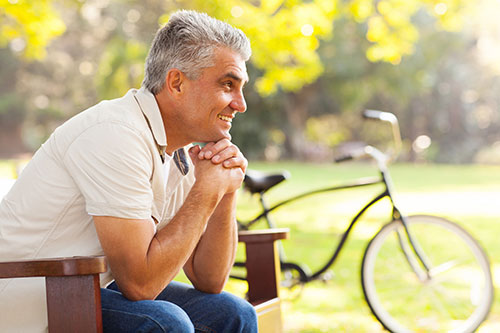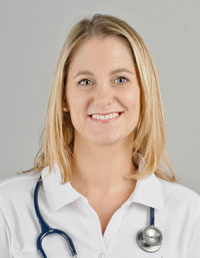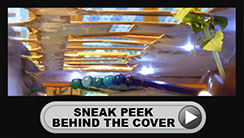
“…my hands were going pump, pump, pump. It was so basic in a way – no fancy beeping machines, hospital bed or team of medical doctors in white coats. Just the wet ground, me in my old jeans and some bystanders with a phone.”
Dr Penny Fraser, medical doctor and founder of HealthFirst, talks to her:
So, what happened that damp evening in December?
“I was on the way to pick up my six-year old daughter from her school friend’s party, when I turned a sharp bend in the road and saw a man lying in a hedge. Then I saw his bicycle lying nearby and two people standing looking at him. This looked a bit worrying to me and I thought my skills as a nurse and First Aid Trainer might be useful. So I pulled over and parked safely a little way ahead.”
What did you do next?
“I grabbed my phone and car keys then approached cautiously wondering what I might find. I asked the two bystanders what had happened and whether I could help. They both looked rather blank, shocked really, and told me that they had no idea what had happened. It was a bit wet on the ground but I just pushed into the hedge where he lay and spoke to him. He didn’t reply and when I rubbed hard on his collarbones, he just lay there unresponsive. I think he was about 60 years old and he looked very pale – white-ish or grey but the evening light was fading and it was difficult to tell.”
It must have been tricky to assess him inside the hedge?
“Yes and rather spiky too! The leaves kept flicking in my face. I could hear him making occasional gasping sounds that I recognized as abnormal and knew I just had to get him out of the hedge into a clear space - he was very ill. So, putting my arms under his armpits, I dragged him carefully out, supporting his head between my forearms.”
Was it difficult to pull out a grown man?
“I’m used to carrying my baby or toddler (or both!) around so I suppose my upper body is quite strong but I didn’t think about it. The adrenaline must have been flowing and I just knew that I had this chance to help him and I certainly couldn’t do a good job inside all that foliage. I was worried about his neck however and whether his spinal cord had been damaged. But as I was approaching the scene, I didn’t see a car or tyre marks; his bicycle was in one piece and there was only a tiny scratch on his nose. So I made the decision to bring him out, thinking that I needed to sort out the fact that he wasn’t breathing normally before worrying about any other injuries.”
What happened next?
“Once he was flat on the pavement, I started chest compressions. He was quite a big man so I was using all my body weight to really push down hard on his chest. It was only the next day that I felt how sore my arm muscles were! As I was doing this, I checked with one of the bystanders who was on his mobile phone that he was calling the emergency services. He was! I felt a bit silly asking as it seemed such an obvious thing to do but you do hear about people calling the local press or their friend in dreadful situations.”
Did you have to wait long before the ambulance arrived?
“It’s difficult to say as time passes so quickly in situations like this. I suppose it was about 8 or 9 minutes. A lot happened in those minutes though. I was giving chest compressions followed by rescue breaths; the man on the telephone was giving updates to the emergency operator; the female bystander was acting as translator between my English and the French-speaking man on the phone. A fourth person then arrived and quickly went up the hill to the sharp bend to slow and direct traffic. We didn’t need a car accident on top of everything else! A friend of mine then passed on her way to the same party that my daughter was at. I called to her to keep my daughter safe at the party until I could come to pick her up. So there were now five people focused on how they could help in this situation.”
So how was the man doing at the centre of all this activity?
“Well, the oxygen was being vigorously pumped round his body, heart, lungs and brain by my chest compressions and it was working! It was enough to bring him back to life again – it was amazing. I have seen a lot of poorly people in my years caring for patients as a nurse and midwife but this I will never forget. He starting breathing again by himself.”
Was that your First Aid finished then?
“Not at all – I knew that this was very encouraging but he wasn’t ‘out of the woods’ yet. Even though his heart was now beating and his lungs were now working, he was still unconscious and floppy. So I rolled him onto his side, into the recovery position, and kept checking that he was breathing ok. I also talked to him because often people can still hear what is going on around them even if they are unconscious.
Then he opened his eyes! He asked me what was going on. I’m not sure he realized that it was him who was the centre of all the activity. I didn’t want to panic him with too much detail so I said that he had been unwell and that the ambulance was on its way. He seemed to accept this quite calmly and kept looking at me as we heard the sirens approaching.”
What happened once the emergency services arrived?
“A gendarme took over securing the area and directing traffic. The paramedics gave him some oxygen and measured his blood pressure etc. He was taken on the stretcher into the ambulance. I told them what had happened, how I gave Cardio-Pulmonary Resuscitation (CPR) and how he had responded. Once they had all that they needed, I gave my contact details and was able to leave to pick up my daughter. In fact, the emergency doctor called me later to confirm some details – I think he was gratified to hear how successful the CPR had been, especially how quickly it had been started.”
This must have been a shocking event for you?
“Yes it was! I was sort of on auto-pilot at the time though. I felt as if my brain was just going click, click, click, running through the steps and my hands were going pump, pump, pump. It was so basic in a way – no fancy beeping machines, hospital bed or team of medical doctors in white coats. Just the wet ground, me in my old jeans and some bystanders with a phone.”
I was quite shaky when I got home later on and the events of that afternoon did go round in my head for the next few nights. It has helped to talk it over with friends and colleagues.
I do think about the man and wonder how he is doing. I ponder about the extra years of life that he will hopefully be having now with his family, friends, hobbies etc. I wonder if he got his bike back!”
This is a true story. The mum wishes to stay anonymous and protect this man’s identity but wants as many people as possible to read what happened that day.
Could YOU be this useful in an emergency situation? Of course you could – come on one of our HealthFirst First Aid Courses and we’ll teach you how, why, when and exactly what to do. Visit http://www.healthfirst.ch/first-aid-courses/ to find a course near you.
Author's bio
 Dr Penny Fraser MB BS BSc(HONS) MRCS(ENG)
Dr Penny Fraser MB BS BSc(HONS) MRCS(ENG)
Dr Penny is a British-trained Emergency Medicine doctor, who lives in Geneva. She is also the mother of two girls aged 9 and 10. Along with Dr Michelle Wright and her other colleagues at HealthFirst, she has a passion for delivering health education and First Aid training to the English-speaking community in Switzerland.
HealthFirst provides a range of practical, interactive First Aid courses including a unique Mountain First Aid Course and a First Aid course, obligatory for the Swiss Driver’s Licence, and suitable for anyone from the age of 14.









